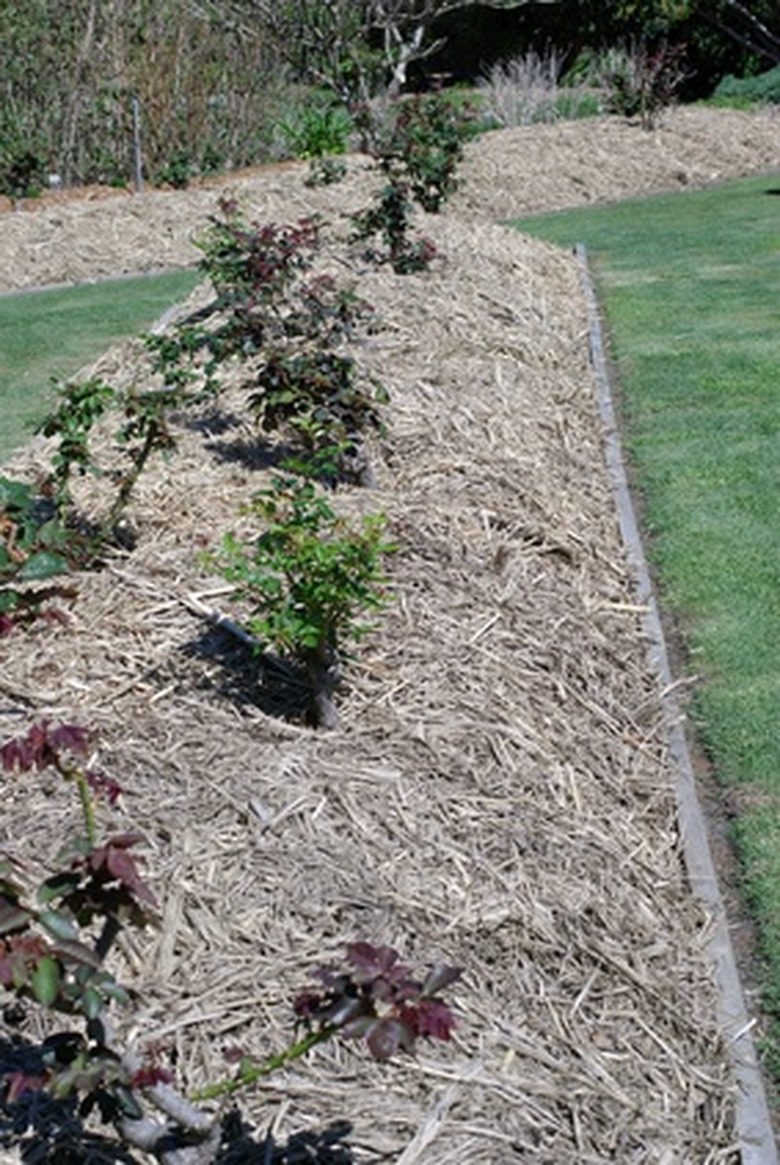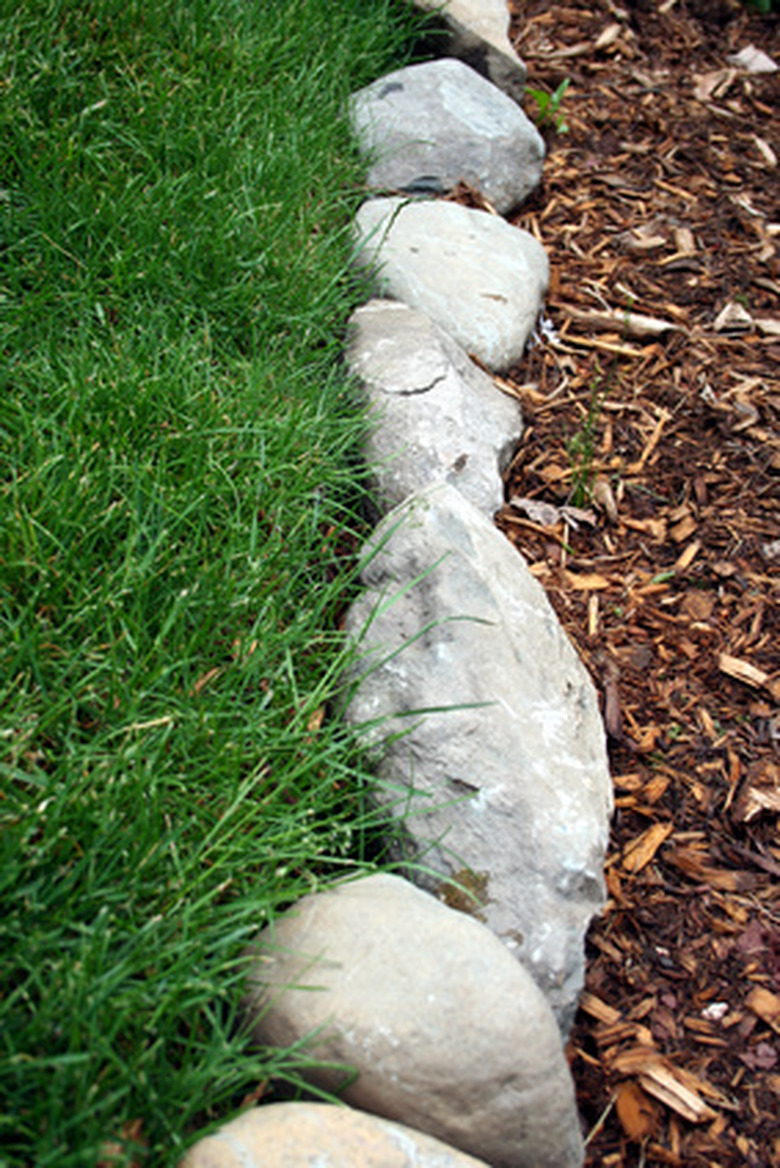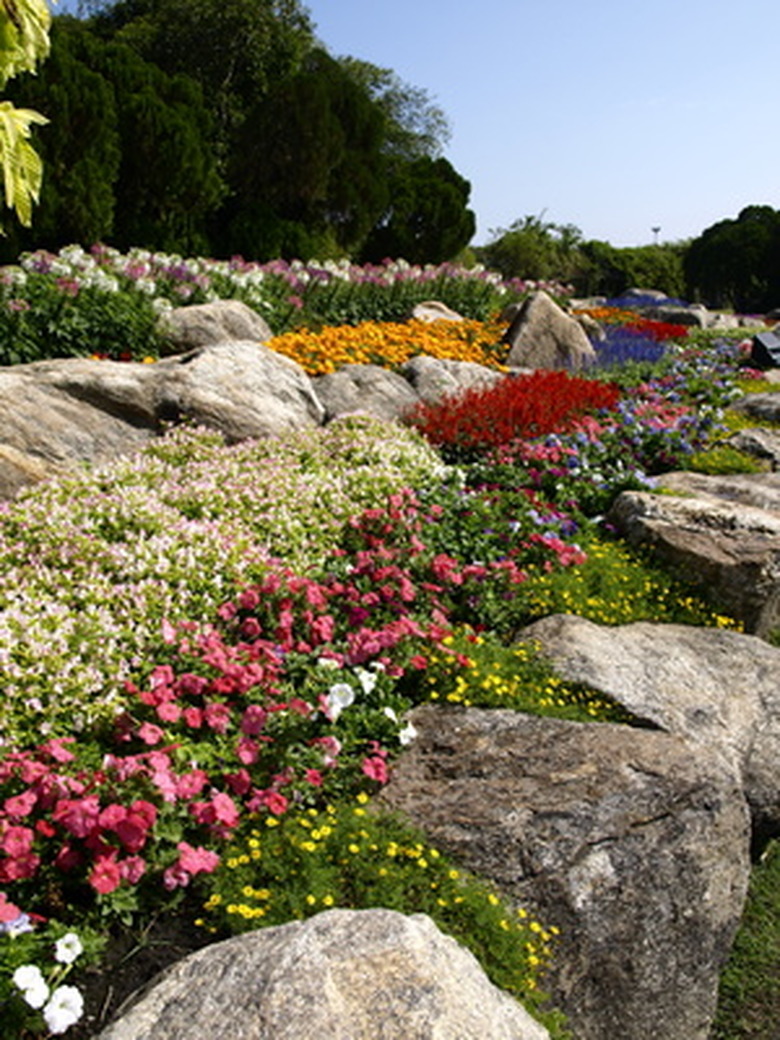How To Apply Mulch On A Hill
Mulch helps to suppress weeds and hold moisture in a garden area. Plants that are mulched around the base tend to grow easier than plants without a layer of mulch. Mulch also helps to keep the roots warm in particularly cold weather.
Things Needed
- Wheelbarrow
- Flat shovel
- Pitchfork
- Tape measure
Mulch helps to suppress weeds and hold moisture in a garden area. Plants that are mulched around the base tend to grow easier than plants without a layer of mulch. Mulch also helps to keep the roots warm in particularly cold weather. Applying mulch on a hill can be difficult because rainwater tends to wash it down the slope.
Step 1
Determine what type of mulch you will be using. According to Richmond Hill Parks and Recreation, cypress mulch is popular for use on slopes. Cypress mulch is organic mulch that will break down over time, adding fertilizer to your soil. Inorganic mulches come in the forms of stone, lava rock or rubber, and are also easily spread over a sloping landscape. Inorganic mulches, however, do not provide the same fertility benefits that organic mulches do. Inorganic mulches do not portray the natural aesthetic that organic mulches provide an outdoor space. Inorganic mulches are heavier and will not break down so they will not wash down a hillside as easily as organic mulches will.
- Mulch helps to suppress weeds and hold moisture in a garden area.
Step 2
Calculate how much mulch you will need in square feet. Measure the land that you need to cover. Websites such as Earth Products and Pro Care Environmental offer mulch calculators (see Resources). With this tool you can enter the space in square feet and it will calculate the amount of cubic yards you will need. The Richmond Hill Parks and Recreation Department writes that an average depth for mulch is between 2 and 3 inches. If the hill is particularly steep, consider making the incline less dramatic. Terracing is another effective way to maintain hillside gardens. This involves a number of tiered retaining walls.
- Calculate how much mulch you will need in square feet.
Step 3
Clear the area of large debris. Remove large rocks, branches, stumps and anything else you don't want to have to spread the mulch around. Prior to lying mulch the soil should be rototilled, weeded, enriched with garden soil, and plants planted in their spots. Once the mulch is laid you will not be able to easily alter the soil beneath it until it degrades. Plants with a significant root structure such as grasses, low-maintenance trees and moss will help to prevent mulch and fertilizer from washing down a slope.
Step 4
Apply surface fertilizer or herbicides depending on your preference. Use a wheelbarrow to transport the mulch from the back of a truck, driveway or tarp to the spreading area. Some mulches will permanently stain concrete so be careful about letting it sit on your patio. Handy tools for spreading include flat shovels and pitchforks. Spread and flatten the mulch with a side-to-side movement of the pitchfork. Maintain a depth of between 2 and 3 inches. Mulch that is too deep can suffocate and rot plant roots. Aerate the soil regularly to prevent runoff water and only water the upper areas of the slope to allow the water to soak in as it descends.
- Clear the area of large debris.
- Aerate the soil regularly to prevent runoff water and only water the upper areas of the slope to allow the water to soak in as it descends.


